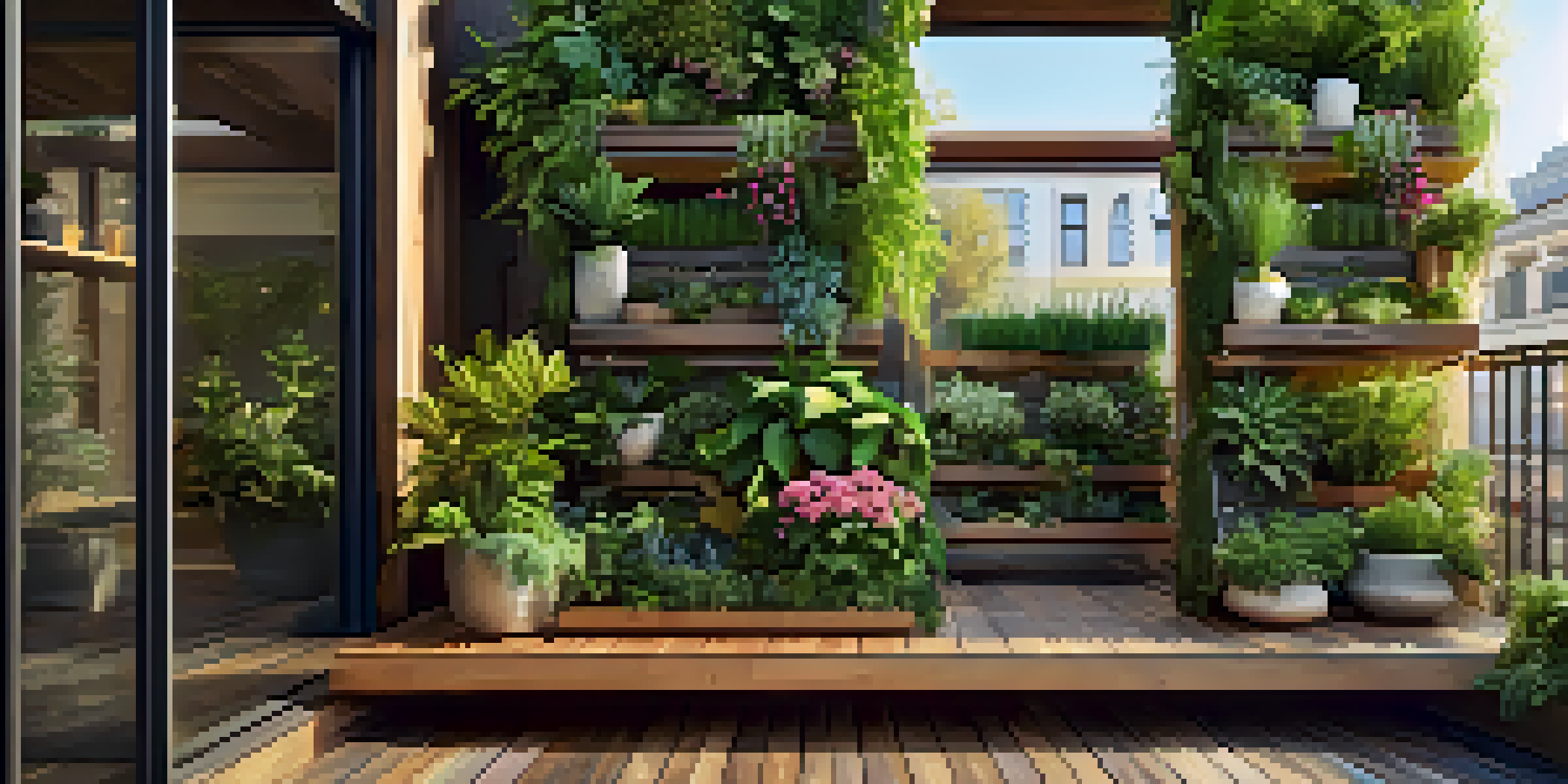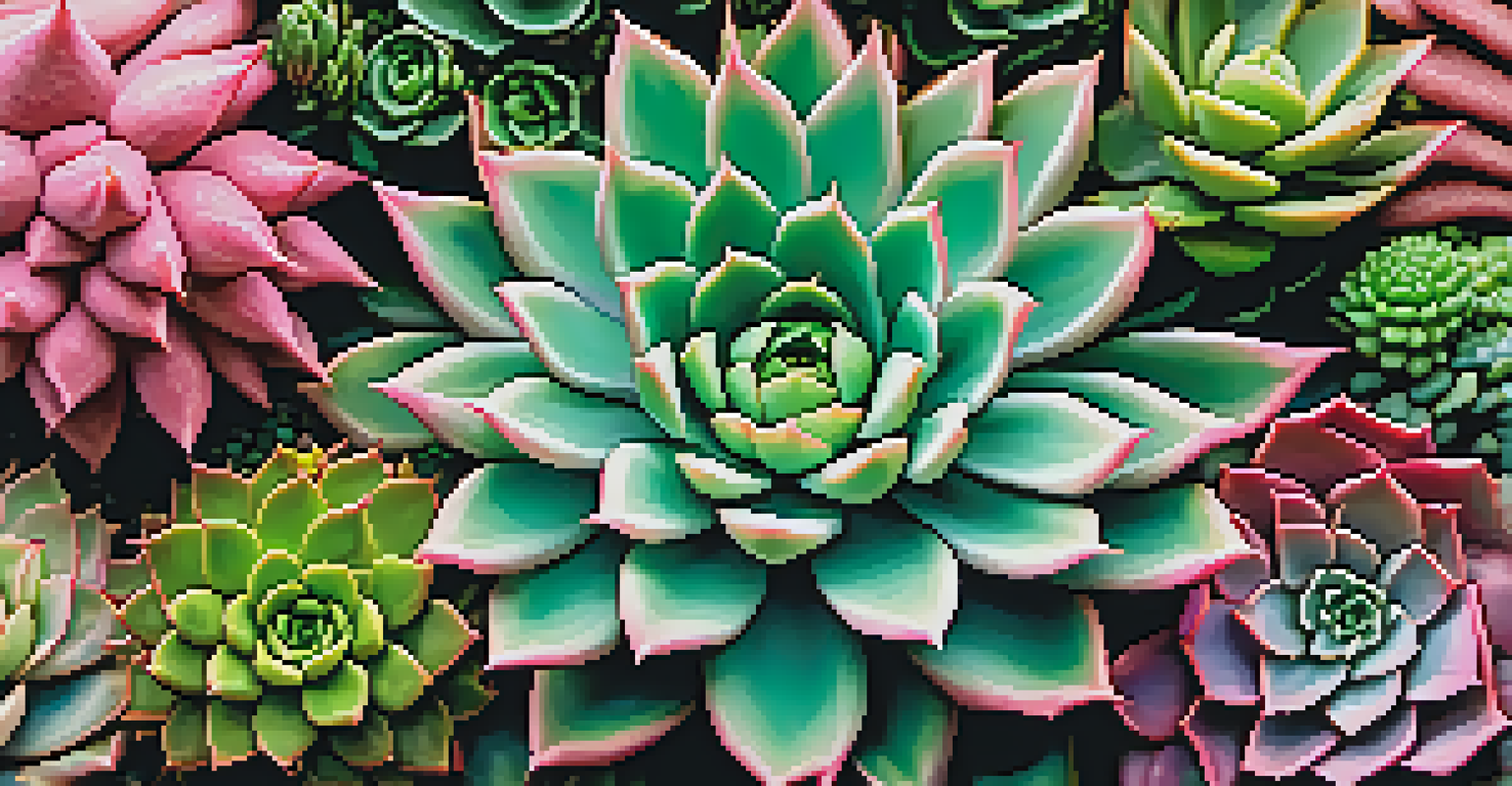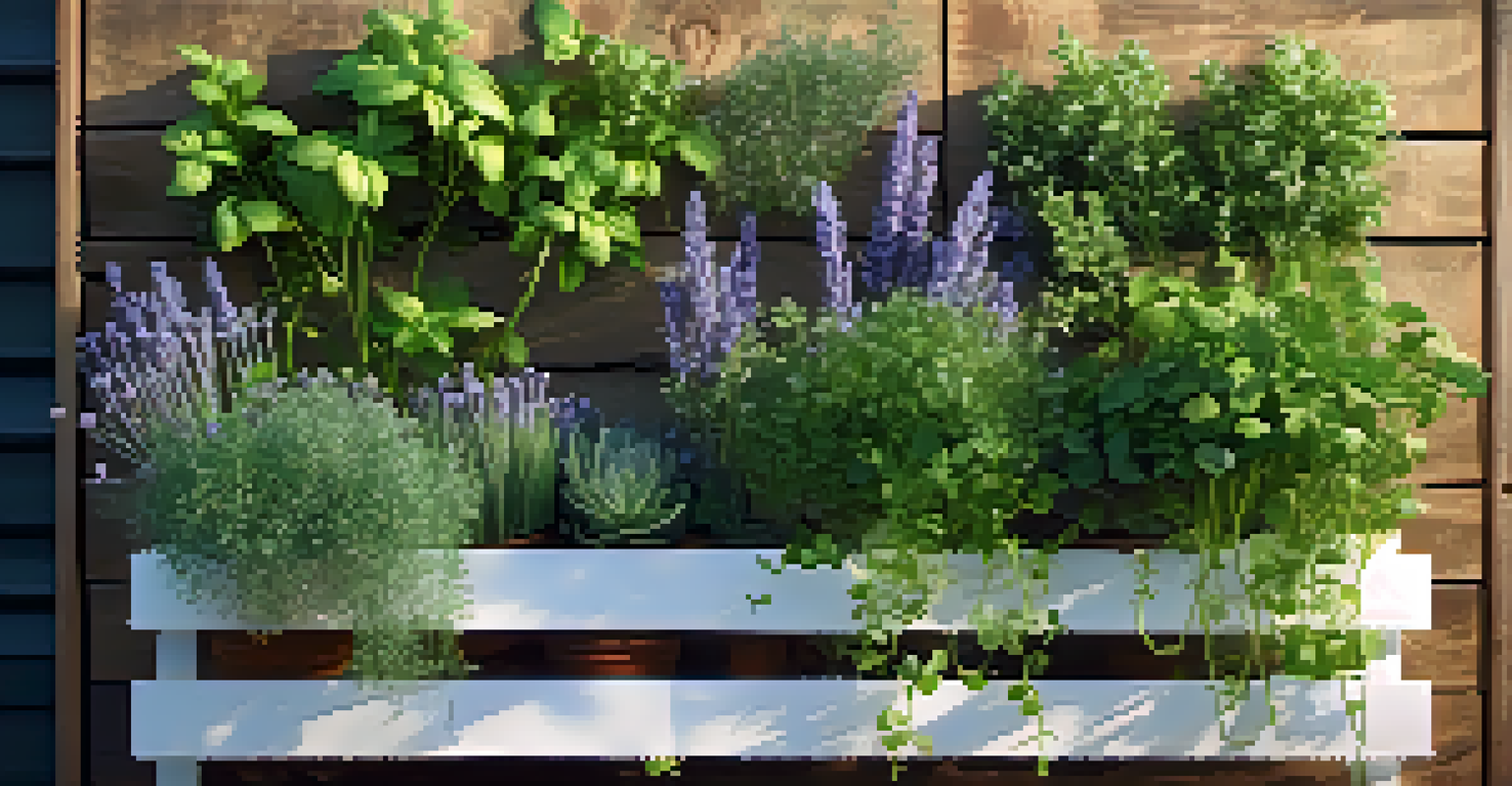Creating a Vertical Garden: Step-by-Step Guide for Beginners

Understanding the Benefits of Vertical Gardening
Vertical gardening is a fantastic way to maximize limited space, especially in urban settings. By growing plants upwards instead of outwards, you can create a lush green wall that not only beautifies your environment but also purifies the air. Additionally, vertical gardens can reduce heat and provide insulation, making them a great eco-friendly choice for your home.
Gardening adds years to your life and life to your years.
Another significant benefit is the accessibility they offer. If you have mobility issues or simply want to avoid bending down all the time, vertical gardens allow for easier maintenance. Plus, they can be designed at various heights, making it convenient for everyone to reach their plants.
Finally, vertical gardens are a great way to enhance your mental well-being. Studies have shown that being around greenery can reduce stress and improve mood. Creating a vertical garden can be a rewarding project that not only provides aesthetic pleasure but also contributes positively to your mental health.
Choosing the Right Location for Your Vertical Garden
The first step in creating a vertical garden is selecting the perfect location. Look for an area that receives adequate sunlight, as most plants need at least 6-8 hours of light daily. A south-facing wall is often ideal, but be mindful of any overhanging trees or structures that could cast shadows.

Next, consider the accessibility of your chosen spot. You’ll want to ensure that you can easily reach your plants for watering, pruning, and harvesting. Additionally, think about how the location fits into your overall space; a vertical garden should complement your home or garden, not overwhelm it.
Maximize Space with Vertical Gardens
Vertical gardening allows you to utilize limited space effectively by growing plants upwards, enhancing both aesthetics and air quality.
Lastly, keep in mind the climate in your area. Some plants thrive in humid conditions while others prefer drier environments. By understanding your local climate, you can select plants that will flourish in your vertical garden.
Selecting the Right Plants for Your Vertical Garden
Choosing the right plants is crucial for the success of your vertical garden. Start by selecting plants that are well-suited for vertical growth, such as climbing vines, succulents, or herbs. Consider mixing plants with different textures and colors to create a visually appealing display.
The greatest fine art of the future will be the making of a comfortable living from a small piece of land.
Additionally, think about the maintenance level of each plant. Some plants require more care than others, so it’s important to select a variety that fits your lifestyle. For instance, if you’re busy or a beginner, opt for low-maintenance plants that can thrive with minimal attention.
Finally, consider companion planting, where certain plants can benefit each other when grown together. For example, herbs like basil and parsley grow well alongside flowering plants, and they can help repel pests, creating a healthier garden ecosystem.
Gathering Materials for Your Vertical Garden
Before you start building your vertical garden, it’s essential to gather all the necessary materials. You’ll need a sturdy frame, which can be made from wood, metal, or even repurposed materials like pallets. Make sure it’s durable enough to support the weight of the plants and soil.
Next, consider the planting containers. Options range from traditional pots to felt pockets or vertical planters with built-in irrigation systems. The choice depends on the type of plants you’re growing and your personal aesthetic preferences.
Select the Right Location
Choosing a location with adequate sunlight and accessibility is crucial for the success of your vertical garden.
Don’t forget about soil and fertilizers! A high-quality potting mix that promotes drainage is key for healthy plant growth. You may also want to invest in slow-release fertilizers to provide your plants with the nutrients they need over time.
Building Your Vertical Garden: Step-by-Step Instructions
Now that you have your materials, it’s time to build your vertical garden! Start by assembling the frame according to your design, ensuring it’s stable and secure. Depending on your chosen material, you might need screws, nails, or brackets to hold everything together.
Once your frame is ready, attach your planting containers or pockets. Make sure they’re evenly spaced and securely fastened to prevent any accidents. If you’re using a modular system, follow the manufacturer’s instructions for installation.
Finally, fill each container with your potting mix, and plant your chosen greenery. Be sure to water them lightly after planting and give them a few days to adapt to their new home before diving into routine care.
Watering and Maintenance Tips for Your Vertical Garden
Maintaining a vertical garden is vital for its longevity and health. Regular watering is crucial, especially in warmer months. You might want to consider a drip irrigation system to ensure that each plant receives adequate moisture without over-saturating the others.
In addition to watering, keep an eye on your plants for any signs of pests or diseases. Regularly inspecting your garden will help you catch any issues early, making it easier to manage them. Don’t hesitate to remove any dead or wilted leaves to encourage new growth.
Maintain Your Garden Regularly
Regular maintenance, including watering, pest inspection, and fertilization, is essential to keep your vertical garden healthy and thriving.
Finally, remember to fertilize your vertical garden periodically. A balanced, slow-release fertilizer will provide your plants with the nutrients they need to thrive. Just be sure to follow the recommended application rates to avoid over-fertilization, which can harm your plants.
Enjoying the Fruits of Your Labor: Harvesting Tips
After investing time and effort into your vertical garden, it’s time to enjoy the fruits of your labor! If you’ve planted edible plants, like herbs or vegetables, be sure to harvest regularly to encourage new growth. This not only benefits your plants but also gives you fresh ingredients for your meals.
When harvesting, use clean, sharp tools to prevent damage to the plants. It’s often best to pick in the morning when the moisture content is high, ensuring peak flavor and freshness. Don’t be afraid to experiment with different recipes using your homegrown produce!

Lastly, take a moment to appreciate your vertical garden as it flourishes. Regularly stepping back to observe its growth can be just as rewarding as the harvest itself, allowing you to witness the beauty of nature in your own space.